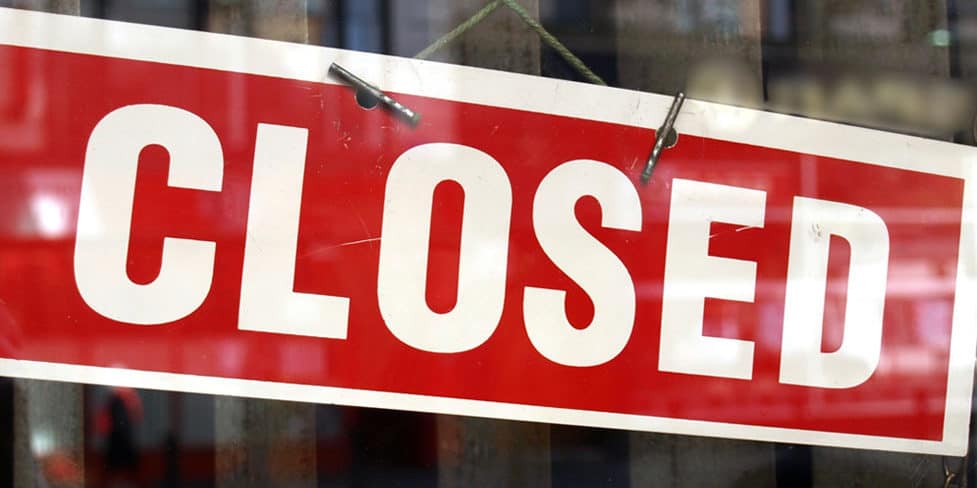Trick Steps in the Compulsory Strike Off Refine
Trick Steps in the Compulsory Strike Off Refine
Blog Article
A Comprehensive Overview to the Compulsory Strike Off Treatment in Corporate Governance
Browsing the elaborate landscape of corporate administration needs a keen understanding of the procedures that control the dissolution of entities. The required strike off treatment, a critical element in business administration, functions as a system to apply conformity and preserve the honesty of business atmosphere. As businesses evolve and circumstances modification, the need to strike off a firm might arise for different reasons. Exploring the details of this procedure, consisting of the legal effects, procedural steps, and post-strike off considerations, offers invaluable insights for stakeholders looking for to browse the intricacies of business administration.

Reasons for Compulsory Strike Off
There are a number of vital factors that might trigger the initiation of a mandatory strike off procedure for a firm. Non-compliance with governing needs can elevate issues about the firm's operations and financial health, leading to the decision to strike off the company from the register.
Additionally, companies that have actually ceased trading or are no more accomplishing any kind of service tasks might also deal with required strike off. This can be as a result of bankruptcy, mergers, or simply a choice to wind up the business. In such situations, maintaining the firm on the register would offer no purpose and could potentially create complication amongst stakeholders.
Inevitably, the need of a compulsory strike off in business governance arises when a firm is no more operating according to the legislation or has actually come to be inoperative, demanding its removal from the authorities records.
Legal Implications and Risks
Given the circumstances that trigger a required strike off in company administration, it is crucial to recognize the legal ramifications and threats related to such activities. When a company is struck off the main register, it ceases to exist as a lawful entity. This can have serious consequences for supervisors, creditors, and shareholders. Supervisors might deal with personal liability for firm financial debts sustained after the dissolution, subjecting their assets to potential seizure. Investors lose their investment in the company, and financial institutions might find it testing to recuperate financial debts owed to them.
In addition, there are legal repercussions for people involved in the management of a business that has been by force struck off. They may be invalidated from serving as directors in the future, face penalties, and even jail time if misbehavior or deceptive tasks are revealed. Furthermore, the reputational damage from a mandatory strike off can have enduring results on people and their capacity to take part in future business ventures. Recognizing these lawful effects and dangers is crucial for all stakeholders included in the corporate governance procedure to guarantee and navigate possible pitfalls conformity with the law.
Actions in the Strike Off Process
Initiating the compulsory strike off process in company administration includes a collection of proposed steps outlined by governing authorities. The primary step usually requires the company to submit an official application or notification to the relevant government agency or registrar signaling its intent to be struck off the official register. Consequently, the company is often needed to clear up any superior responsibilities, debts, or tax obligations to make sure compliance with regulatory demands.
Once the initial documents is sent and economic obligations are fulfilled, the regulatory body will certainly publish a notice in the main gazette or a similar magazine to inform stakeholders regarding the impending strike off - first gazette notice for compulsory strike off. This notice acts as a final opportunity for any type of interested parties to elevate objections or present valid reasons that the firm need to not be liquified
Adhering to the publication of the notice, the regulatory authority will certainly continue with the strike off process if no substantial arguments or obstacles develop. The company will then be officially dissolved, and its name will be removed from the register, effectively marking the conclusion of the required strike off treatment in company governance.
Files Needed for Strike Off
In compliance with governing guidelines, specific documents has to be offered to facilitate the strike off procedure in company administration. The needed documents usually consist of an official application for strike off, which needs to be completed accurately and sent to the pertinent regulatory authority. Additionally, monetary declarations, such as the firm's newest annual report, must be included to make sure that all financial commitments have actually been worked out prior to initiating the strike off procedure. In addition, a declaration of solvency or a declaration verifying that the business has no exceptional responsibilities is typically mandated to demonstrate that the entity can be liquified without creating harm to its lenders. Additionally, any kind of essential approvals from shareholders or board members must be documented and enclosed with the application. It is important to make sure that all the requisite documents is thoroughly ready and submitted based on the suggested guidelines to speed up the strike off procedure efficiently. Failing to give the necessary documentation may cause delays or difficulties in the dissolution of the firm.
Post-Strike Off Considerations and responsibilities
Following the conclusion what is compulsory strike off of the necessary documents for strike off, focus shifts to the post-strike off obligations and considerations that are essential in the corporate administration procedure. Once a firm has actually been struck off the register, it is critical to make certain that all remaining possessions are dealt with suitably.

Verdict
Finally, the obligatory strike off procedure in company administration acts as a necessary device to get rid of inoperative companies from the register. Comprehending the reasons, lawful effects, steps, and files needed for strike off is vital for compliance with regulatory demands. It is essential for companies to meet their post-strike off commitments and consider the implications of this process in order to keep great standing and avoid possible threats.
There are numerous crucial factors that might motivate the initiation of a compulsory strike off treatment for a business (compulsory strike off). Non-compliance with regulatory requirements can raise problems concerning the firm's operations and economic health, leading to the choice to strike off the firm from the register

Report this page